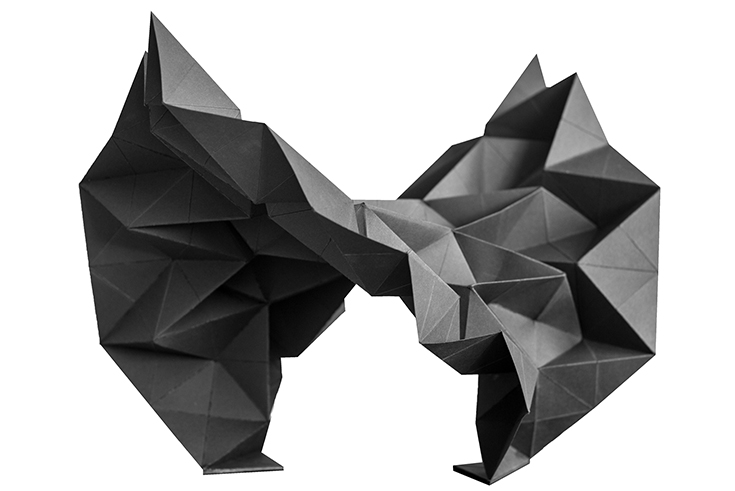Parametric Pavilion Miura Origami – University of Applied Sciences Munich

Foto: Hochschule München
The folding pattern, Miura-Ori (Miura fold), designed by Japanese astrophysicist Koryo Miura, is generated from a tessellation with parallelograms. One particularity of the folding method is that the object can be unfolded through a continuous movement in just one direction.
The basic structure of the pavilion is a square grid of nine units by nine units. These units are divided by diagonals into isosceles triangles of equal size. The forming process occurs by pulling the two opposite corner points together by means of steel cables.
The folding pattern and the entire movement process were generated by a digital model by means of parametric control. The digital model enables variable tessellation of the surface in parallelograms with definable edge lengths, as well as control of the cutting.
An Alucobond panel as an aluminium sandwich panel, was selected as the material for the folding structure. The aluminium panels are interlinked at the edges through linear hinges. For reinforcement, rigid sheet metal elements are inserted at the edges after the assembly process.
ar.hm.edu
The basic structure of the pavilion is a square grid of nine units by nine units. These units are divided by diagonals into isosceles triangles of equal size. The forming process occurs by pulling the two opposite corner points together by means of steel cables.
The folding pattern and the entire movement process were generated by a digital model by means of parametric control. The digital model enables variable tessellation of the surface in parallelograms with definable edge lengths, as well as control of the cutting.
An Alucobond panel as an aluminium sandwich panel, was selected as the material for the folding structure. The aluminium panels are interlinked at the edges through linear hinges. For reinforcement, rigid sheet metal elements are inserted at the edges after the assembly process.
ar.hm.edu

